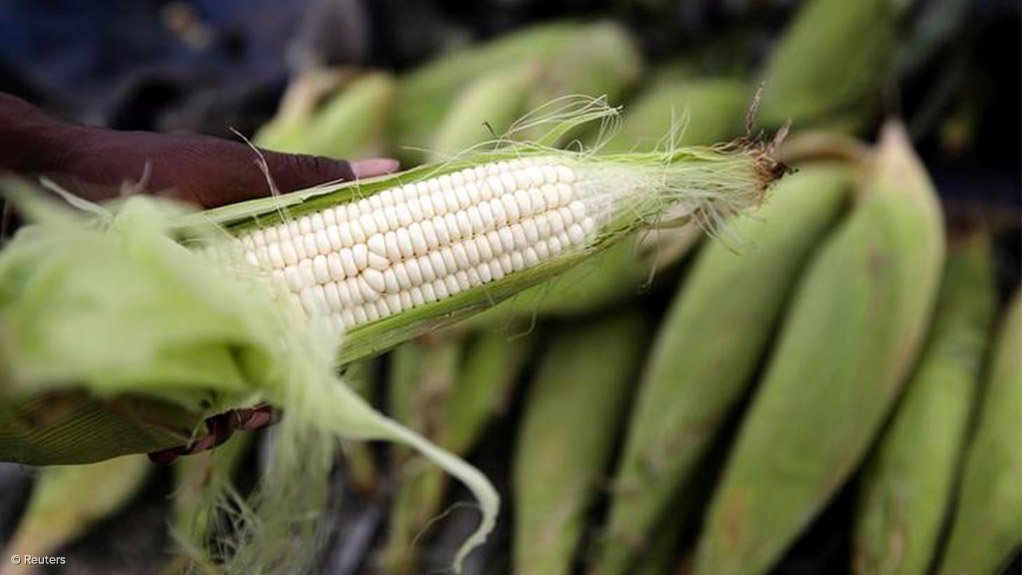Agriculture has taken strain this year, BFAP implores govt to fix ports, rail
Nonprofit information organisation the Bureau for Food and Agricultural Policy (BFAP) says agriculture’s contribution to gross domestic product (GDP) will decline in the coming year, mostly owing to the fallout from recent blows dealt to the sector, but its contribution should resume an upward trajectory from 2024 to 2031.
The organisation on August 17 released its latest outlook for the agricultural industry in South Africa for the ten years from 2022 to 2031.
BFAP commodity markets manager Dr Tracy Davids says there may be a perfect storm in the agricultural markets at the moment, comprising weather conditions such as excessive flooding, hurricanes, droughts and heat waves globally, as well as significant supply and demand dynamics that are playing out.
This while energy, freight, feed and fertiliser costs have risen sharply in the last few months, alongside inflation, the latter of which leads to secondary impacts to the agricultural sector such as reduced consumer spending power.
She elaborates that shipping and logistics constraints are disrupting exports at the moment and that global schedule reliability remains very low, with the average days of late arrivals for exports from South Africa having doubled in recent months. This while freight rates have increased five-fold in the last 14 months and are only just starting to come down.
While food price increases have supported revenues in some segments, input costs have increased sharply at the same time.
Davids says this latest outlook by the BFAP was generated amid great uncertainty, much of which stems from global factors.
She points out that the high input cost environment has added considerably to producer risks in an already volatile environment, which leaves in its wake cash flow implications for small producers, in particular, and a critical need to increase productivity.
FIELD CROPS
Davids says strong revenue gains in the field crops segment have been underpinned by good yields and high prices globally; however, normalisation in world prices will mean lower revenues for producers soon enough, although this is good news for consumers.
As with other agricultural segments, sharp input cost increases contribute to greater producer risks and cash flow concerns, but the high profitability rates of late have at least provided an opportunity for investment in machinery and precision agriculture.
As uncertainty globally subsides, and food production responds to shortages, the prices of field crops will normalise, but the exact timing thereof remains uncertain.
This while other factors, such as the speed of renewable energy uptake and its effect on input cost, palm oil supply challenges owing to weather and labour issues, trade policies as many countries are restricting trade at the moment, and numerous weather events, including extreme heat in the northern hemisphere, are also influencing global prices.
Davids believes global prices for field crops are unlikely to come down to levels witnessed before Covid-19 first struck. High fertiliser prices and its slower-than-average decline compared with other commodities will also continue to influence profitability in the 2022 to 2031 period.
These prices are also unlikely to reach the low levels recorded before 2020.
Davids summarises that, with margins narrowing, grain and oilseed producers need to remain on top of the productivity curve, to which research and development and more investment in top-class technology is key.
ANIMAL PRODUCTS
The animal products sector is seeing revenue growth, but profitability is being challenged by high feed costs and other international factors. It remains negatively impacted on by dampened consumer spending power.
Davids highlights that, on a positive note, these trends are cyclical and feed costs should come down again once grain prices normalise.
“We will need to accelerate exports if we want to accelerate growth in this sector. Luckily South African producers are highly competitive, particularly in beef and pork.
“Domestic consumption growth of animal products is expected to slow over the ten-year period to 2031 and, therefore, production growth is possible only if competitiveness and exports in the global market grows,” she notes.
Davids mentions that decreasing chicken imports, alongside increased investment in domestic production and processing, partly owing to government’s support through the Poultry Master Plan, are positive.
Imports are expected to stabilise at around 480 000 t/y in coming years.
Profitability in poultry production is, however, also under pressure owing to high feed prices, but as is the case with other animal products, the cycle will turn positive at some point.
Production growth is expected to return once the feed price cycle normalises, Davids says.
In beef, herds are expanding and additional production will enter the market in 2023 to 2025; however, immense growth potential is being constrained by animal disease.
Davids elaborates that domestic spending power will remain low for the foreseeable period and therefore prices will need to decline to accelerate domestic consumption.
Therefore, exports will be a critical market outlet to sustain growth and animal disease management is a key enabler of that.
Davids sees beef as the single largest opportunity to ignite inclusive growth in agriculture, owing to the many small producers involved in the sector.
HORTICULTURE
Despite being a historical star performer, horticulture is currently experiencing severe strain on margins owing to price challenges. Logistical constraints are also impeding the quality of perishable products.
Real export prices for major fresh fruit and nuts all increased over the decade preceding 2019 but, as greater volumes have entered the market, significant price pressure has been evident. This has been exacerbated by exogenous factors such as Covid-19, the Ukraine war and logistical constraints globally and at South Africa’s ports.
In citrus specifically, weak prices and rising inputs, including labour, fertiliser, requisites, fuel and intermediate goods are putting profitability under severe pressure.
Davids notes that numerous big investments have been made into labour-intensive horticulture industries and, therefore, the sector needs to prioritise opening new markets for these products.
Meanwhile, the BFAP finds that expansion in horticulture is slowing drastically, but, encouragingly, production volumes are rising, which shows the effect of the consolidation of wine, pome fruit and stone fruit areas that is under way.
Davids mentions that there are a few expansion projects happening in table grapes, citrus, avocados and blueberries.
The BFAP’s outlook expects carton exports to increase by 38% year-on-year over the ten-year period to 2031; therefore, logistics will need to expand to sustain growing volumes.
Davids says sufficient port capacity, functioning rail networks and up-to-date road maintenance are critical to enable sustainable exports and trade relations with key partners.
“Our agricultural sector is valuable to the economy and it must be preserved through competitive, expanded market access and improved logistics efficiency,” she concludes.
Article Enquiry
Email Article
Save Article
Feedback
To advertise email advertising@creamermedia.co.za or click here
Comments
Press Office
Announcements
What's On
Subscribe to improve your user experience...
Option 1 (equivalent of R125 a month):
Receive a weekly copy of Creamer Media's Engineering News & Mining Weekly magazine
(print copy for those in South Africa and e-magazine for those outside of South Africa)
Receive daily email newsletters
Access to full search results
Access archive of magazine back copies
Access to Projects in Progress
Access to ONE Research Report of your choice in PDF format
Option 2 (equivalent of R375 a month):
All benefits from Option 1
PLUS
Access to Creamer Media's Research Channel Africa for ALL Research Reports, in PDF format, on various industrial and mining sectors
including Electricity; Water; Energy Transition; Hydrogen; Roads, Rail and Ports; Coal; Gold; Platinum; Battery Metals; etc.
Already a subscriber?
Forgotten your password?
Receive weekly copy of Creamer Media's Engineering News & Mining Weekly magazine (print copy for those in South Africa and e-magazine for those outside of South Africa)
➕
Recieve daily email newsletters
➕
Access to full search results
➕
Access archive of magazine back copies
➕
Access to Projects in Progress
➕
Access to ONE Research Report of your choice in PDF format
RESEARCH CHANNEL AFRICA
R4500 (equivalent of R375 a month)
SUBSCRIBEAll benefits from Option 1
➕
Access to Creamer Media's Research Channel Africa for ALL Research Reports on various industrial and mining sectors, in PDF format, including on:
Electricity
➕
Water
➕
Energy Transition
➕
Hydrogen
➕
Roads, Rail and Ports
➕
Coal
➕
Gold
➕
Platinum
➕
Battery Metals
➕
etc.
Receive all benefits from Option 1 or Option 2 delivered to numerous people at your company
➕
Multiple User names and Passwords for simultaneous log-ins
➕
Intranet integration access to all in your organisation

















